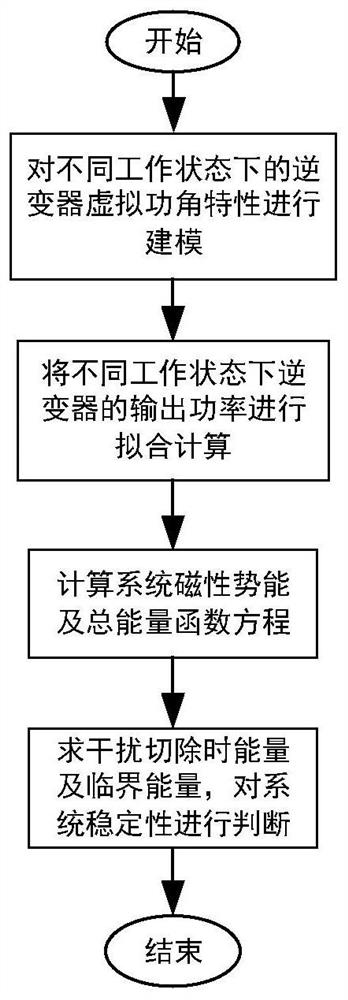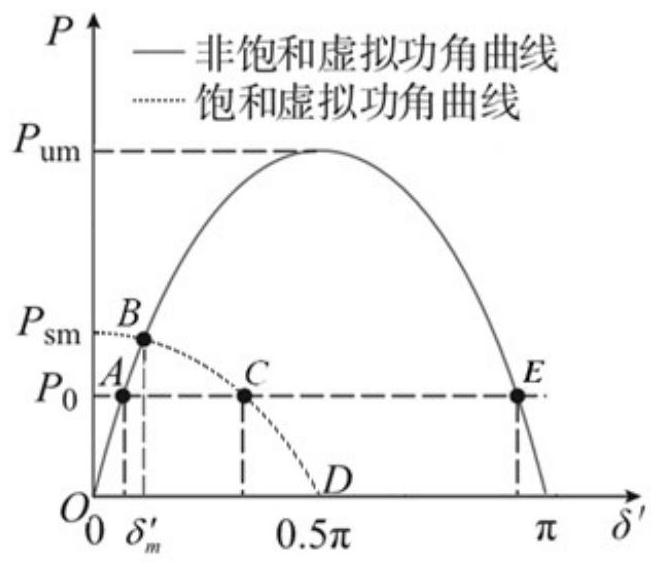Transient stability analysis method of power system with vsg-iidg based on energy function
A technique of transient stability analysis and energy function, applied to electrical components, circuit devices, AC network circuits, etc., can solve problems such as non-compliance with Lyapunov conditions, sudden changes in the total energy function of the system, and sudden magnetic potential energy changes
- Summary
- Abstract
- Description
- Claims
- Application Information
AI Technical Summary
Problems solved by technology
Method used
Image
Examples
Embodiment
[0048] An energy function-based transient stability analysis method for a power system containing VSG-IIDG, comprising the following steps:
[0049] The first step is to model the virtual power angle characteristics of the inverter, and obtain the power angle characteristic equation of the inverter in the two cases of current unsaturated and saturated, and its expression is as follows:
[0050]
[0051] In the formula, V is the inverter output voltage when the inverter current is not saturated, U is the voltage on the infinite grid side, X ∑ is the reactance between the inverter and the infinite grid, I max After the current is saturated, the inverter fades into the maximum output current of the Norton equivalent current source.
[0052] At the demarcation point between current saturation and unsaturated current, the system will have a corresponding virtual power angle δ′ m , when the inverter virtual power angle is less than δ′ m When , the inverter works along the unsa...
PUM
 Login to View More
Login to View More Abstract
Description
Claims
Application Information
 Login to View More
Login to View More - R&D
- Intellectual Property
- Life Sciences
- Materials
- Tech Scout
- Unparalleled Data Quality
- Higher Quality Content
- 60% Fewer Hallucinations
Browse by: Latest US Patents, China's latest patents, Technical Efficacy Thesaurus, Application Domain, Technology Topic, Popular Technical Reports.
© 2025 PatSnap. All rights reserved.Legal|Privacy policy|Modern Slavery Act Transparency Statement|Sitemap|About US| Contact US: help@patsnap.com



